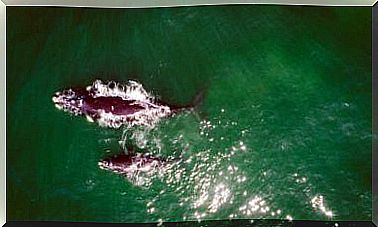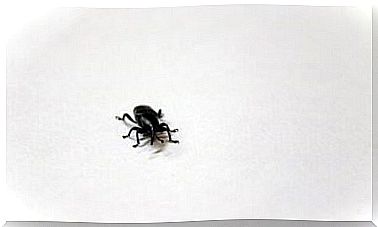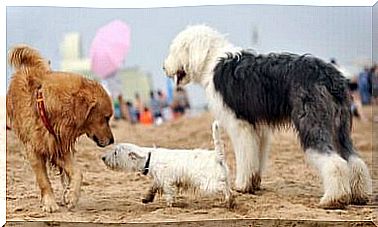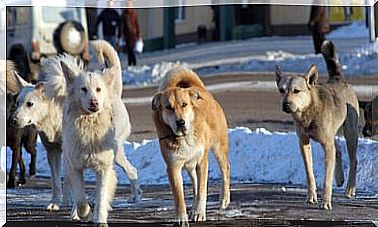Origin And Evolution Of The Horse

Knowing the origin and evolution of horses is to set out on a historic journey. And that can reveal a lot about human civilization.
Living with the horses it was very important for the development of our culture.
These animals helped to break down barriers, bridge huge distances and connect different peoples. Furthermore, they supplied entire civilizations with essential supplements for survival.
The origin and evolution of the horse reveals that these animals were able to develop magnificent skills of sociability and coexistence, to the point of creating a historical bond with the human being. And that allowed both species to survive.
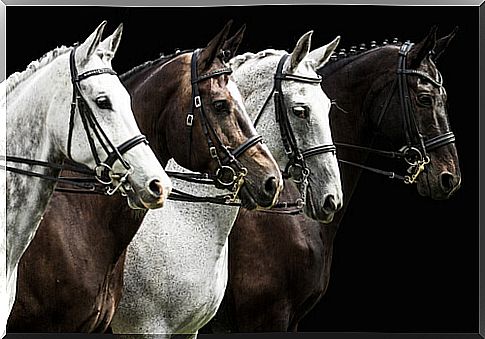
Etymology of the term “horse”
These large herbivores are characterized by their long, arched neck adorned with a voluptuous mane.
However, this animal was not always called “horse”. The first Latin term used to name this animal species was “equus”. Late Latin popularized the term “caballus”, which has Celtic roots and means “castrated horse”.
As for the term “mare”, used to describe females, it derives from “equa”, feminine from “equus”.
taxonomy
At first, domestic horses were believed to belong to a different species from their wild relatives. Therefore, in mid-1758, Linnaeus included domestic horses in the species Equus caballus , while wild horses were already classified within the species Equus ferus .
Later, science demonstrated that wild and domestic horses belonged to the same species. The differences in physiognomy and personality they were motivated by different evolutionary processes and specific training.
That is why all horses are currently grouped in the same species and given the scientific name of Equus ferus caballus .
Brief summary of the horse’s origin and evolution
The first reports of the creation and domestication of the horse date from the middle of the year 3500 BC, in the region that today belongs to Kazakhstan. Archaeological research has allowed us to suppose that the horse’s first ancestor lived more than fifty million years ago.
Eohippus (or Hyracotherium)
Thus is known the oldest ancestor of the horse. In fact, rebuilding his skeleton makes him more like a tiny dog. His body was between eight and forty centimeters tall. He had a short face and the eye sockets were centered on the face.
These fossils have been found in the US state of Oregon and in the Eocene sediments of the state of Wyoming in the United States. It is supposed to have first appeared more than 55 million years ago and spread across North America and Eurasia.
mesohippus
His name means “middle horse” (or “middle horse”). It is supposed to represent the transition from the primitive species to the modern horse. From it appear teeth with high crowns that allow you to graze herbs, leaves and sprouts, and with that they begin to show a better state of health.
Fossils have been found in Canada and the US states of Colorado, Nebraska and Dakota. They lived approximately 37 million years ago.
Myohippus
The emergence of Miohippus marks the first horizontal branch of the horse’s family tree. This means that the diversification of breeds starts to happen.
It is assumed that there were many specimens of Miohippus . They occupied vast territories in the Oligocene, especially the Florida and Western regions of the United States. They lived over 32 million years ago.
parahippus
They retained primitive features, such as the three toes on their paws, but showed an important change in habitat. They are supposed to have appeared more than 24 million years ago.
Merychippus
It is the first ancestor who has an appearance similar to that of the modern horse. Although the paws still having three fingers, the face and the aforementioned paws were already enlarged. Which represented the possibility of migrating over long distances and improving grazing techniques for food.
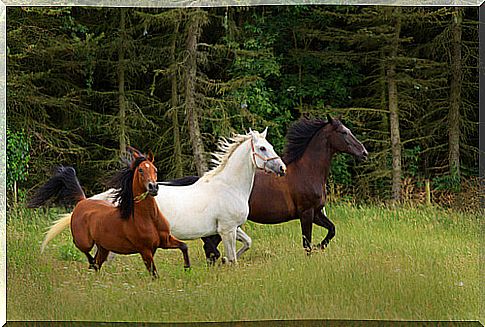
Pliohippus
It is considered the grandfather of the horse. It branched out widely, giving rise to several races that occupied the entire continent. They lived between six and twelve million years ago.
dinohippus
It is the direct relative of the genre Equus , which encompasses horses, zebras and donkeys. Fossils were found in North America, but are supposed to have occupied Europe, Asia and South America as well. They lived between five and thirteen million years ago.
Equus
It was the only genus in the horse family that survived thanks to its adaptive capacity. The first specimen is supposed to have appeared five million years ago. Fossils have been found on every continent except Australia and Antarctica.
The Equus accompanied humanity in wars, migrations, cultures, sports, travel, and therapies doctors for more than 3,500 years. It represents the most successful adaptation in the process of origin and evolution of this beautiful animal.
